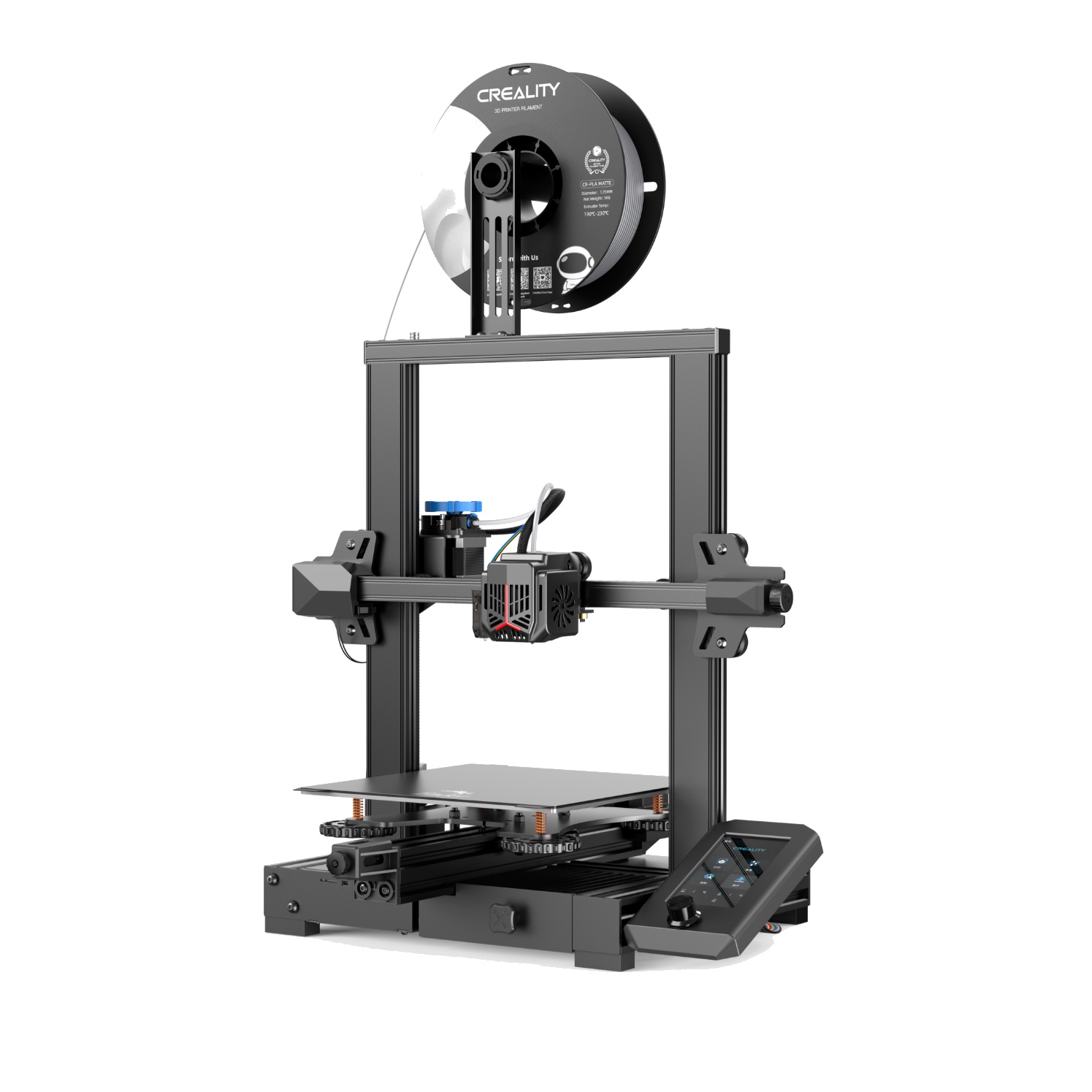Compare Mars 5 vs Ender 3 V2 Neo
Comparison between the best 3D printers
Choose the best 3D printer at the best price. The cheapest 3D printers are here.
Buy a 3D printer here with 3D Fila.
 |
 |
|
| Model | Mars 5[BUY Mars 5] |
Ender 3 V2 Neo[BUY Ender 3 V2 Neo] |
| Printing Material | Resin | Filament |
| Buy Resin for Elegoo Mars 5 | Buy Filament forCreality 3D Ender 3 V2 Neo | |
| Estimated price | $199,00 | $310,00 |
| Manufacturer | Elegoo | Creality 3D |
| Release Year | 2024 | 2022 |
| Print Volume [mm] | 143x89x150 | 220x220x250 |
| Printer Size [mm] | 230x230x433 | 438x424x472 |
| Weight [kg] | 6,6 | 9,8 |
| Power Loss Recovery | NO | YES |
| Maximum Resolution [mm] | 0,01 | 0,1 |
| Processor | 4.2.2 mainboard | |
| Display | Touchscreen 3,5'' | Display touchscreen 4,3'' |
| Power Supply | ||
| Connectivity | USB | SD / USB |
| Operating systems | Windows, Max, Linux | Windows, Mac, Linux |
| Date of registration in the system | 2025-04-23 | 2022-12-09 |
| Release date | 2024 | 2022 |
| Extra features | Elegoo Mars 5 features a 6.6 4K monochrome LCD screen and 35um XY resolution, with auto-leveling and system check at startup. It includes smart sensors to alert for leveling failure, resin shortage, and residue detection. Using MSLA technology with a 405 nm COB light source, it also offers a 3.5 touch screen and supports various resins, including washable, ABS-like, and plant-based types. | The Ender 3 V2 Neo printer stands out for its automatic bed leveling with the CR Touch system, ensuring high-quality initial layers. It features an all-metal Bowden extruder for increased durability and improved filament handling. Its flexible, PC-coated magnetic build plate makes it easy to remove prints and is durable and easy to clean. It also includes a new user interface with model preview and an updated gantry design. The Ender 3 V2 Neo maintains the same build volume and temperatures as the previous version, supporting popular filaments such as PLA and ABS. It features a quiet 32-bit mainboard and additional features such as a filament sensor, print recovery, simple 3-step assembly, an integrated toolbox, and belt tensioners. |
| Support for multiple colors and materials (AMS and CFS) | NO | NO |
Notes * |
||
| Cost-benefit | 8 / 10 | 6 / 10 |
| Hardware | 1.6 / 10 | 2.4 / 10 |
| Tela | . | . |
| Print volume | 3 / 10 | 3 / 10 |
| Performance | 9 / 10 | 0 / 10 |
| [BUY Mars 5] | [BUY Ender 3 V2 Neo] |
Conclusion |
| When comparing the Elegoo Mars 5 and the Creality Ender 3 V2 Neo, both 3D printers cater to different user needs and preferences, making them suitable for diverse applications in the realm of 3D printing. The Mars 5, with its lower price point, is an excellent choice for users focused on high-resolution prints using resin materials. Its features, such as a monochrome LCD screen, auto-leveling capabilities, and smart sensors, enhance user experience and printing precision. The compact build volume and lightweight design make it ideal for users who need a more portable solution or are working on smaller, detailed projects. Additionally, the Mars 5 offers a more advanced printing resolution, appealing to users seeking fine detail in their prints. On the other hand, the Ender 3 V2 Neo serves users who prefer filament-based printing and require a larger build volume for more extensive projects. Its durability features, such as the all-metal Bowden extruder and flexible build plate, contribute to a better overall printing experience, particularly for those who print with a variety of filament types like PLA and ABS. The printer's power loss recovery and updated interface are also significant advantages for users who engage in longer print runs or need more control over the printing process. While the Ender 3 V2 Neo is priced higher, it provides robust features and versatility for larger models, making it suitable for hobbyists and professionals alike. In contrast, the Mars 5's focused feature set and affordability cater to users looking for precision in small to medium-sized resin prints. Ultimately, the choice between the two printers depends on your specific printing needs—whether you prioritize detailed resin work or versatile filament options with larger print capabilities. Both models present strong value propositions within their price ranges, catering to distinct user bases in the 3D printing ecosystem. |

